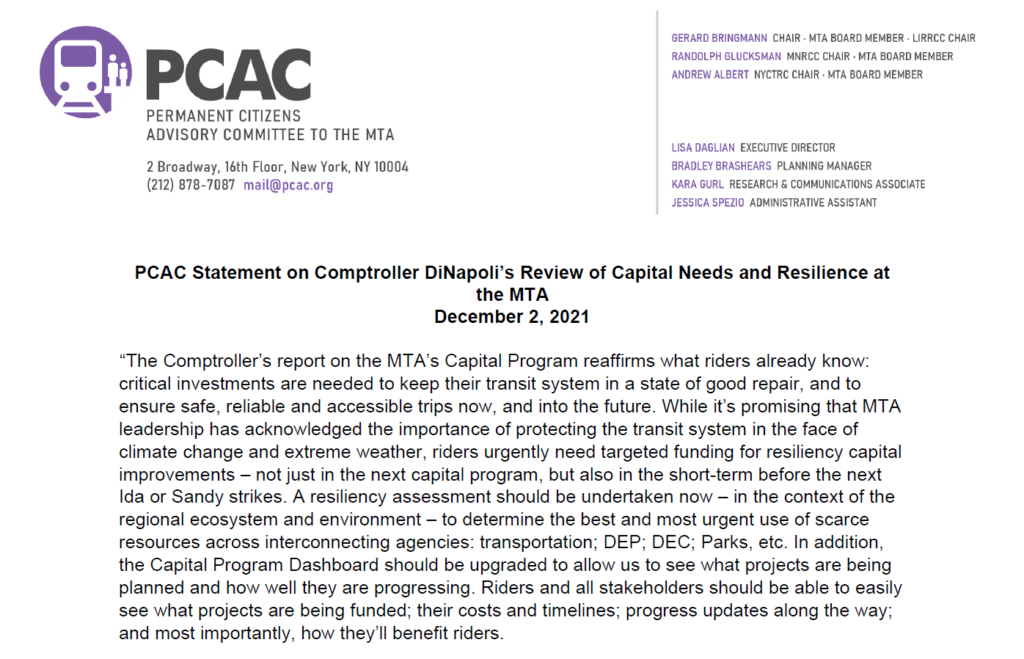“The Comptroller’s report on the MTA’s Capital Program reaffirms what riders already know: critical investments are needed to keep their transit system in a state of good repair, and to ensure safe, reliable and accessible trips now, and into the future. While it’s promising that MTA leadership has acknowledged the importance of protecting the transit system in the face of climate change and extreme weather, riders urgently need targeted funding for resiliency capital improvements – not just in the next capital program, but also in the short-term before the next Ida or Sandy strikes. A resiliency assessment should be undertaken now – in the context of the regional ecosystem and environment – to determine the best and most urgent use of scarce resources across interconnecting agencies: transportation; DEP; DEC; Parks, etc. In addition, the Capital Program Dashboard should be upgraded to allow us to see what projects are being planned and how well they are progressing. Riders and all stakeholders should be able to easily see what projects are being funded; their costs and timelines; progress updates along the way; and most importantly, how they’ll benefit riders.
“With less than half of Sandy repair and resiliency improvement projects completed almost ten years later and many not even started, it’s clear that these projects can’t just be identified; they also have to be sped up and prioritized. The longer projects are delayed, the more they cost. With an influx of federal infrastructure funding on its way, there is no better time to make these critical investments before projects become even more expensive with delay. It is also essential that the MTA continue to push for congestion pricing and urge it forward in every public statement it makes. Saying the funding isn’t needed now isn’t helpful – it’s necessary to keep building toward the transit system we need today, and tomorrow.”
